Fun Team Building Games and Activities for Kids
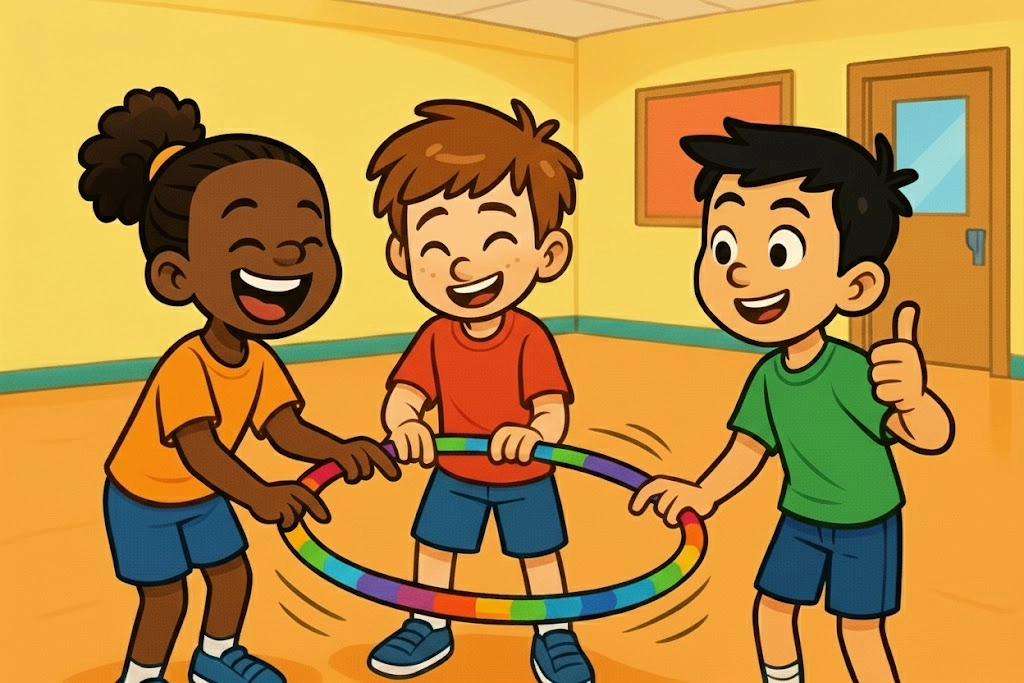
Team building activities offer children more than just entertainment—they create opportunities to develop essential social skills while having fun. Whether you’re a parent organizing a playdate, a teacher planning classroom activities, or a youth group leader, these games and activities can transform a group of kids into a cohesive, collaborative team.
This article explores practical, engaging team-building activities that help kids learn valuable life skills while enjoying themselves.
Benefits of Team-Building Activities for Kids
When kids participate in structured group activities, they gain experiences that shape how they interact with others throughout their lives. These activities create safe environments where children can practice social skills, make mistakes, and learn from them.
Skills Development Through Teamwork
Team-building activities naturally develop multiple skills simultaneously. Communication skills improve as kids need to express ideas clearly and listen to others. A scavenger hunt, for example, requires children to share observations and coordinate their search strategy.
Physical coordination develops through games involving jump rope or hula hoop challenges. Meanwhile, cognitive abilities strengthen as kids must think creatively to solve problems together. One elementary school teacher in Portland notes, “I’ve watched quiet students find their voice during team activities, and overly dominant students learn to share leadership.”
Key developmental areas include:
- Verbal and non-verbal communication
- Active listening and following instructions
- Physical coordination and spatial awareness
- Emotional regulation during competitive or challenging moments
- Adaptability when plans change
Boost Confidence and Promote Leadership
Group activities give each child opportunities to shine in different ways. Some kids naturally step into leadership roles, while others contribute unique ideas or provide emotional support to team members who feel frustrated.
When teams of two or small groups must work together to complete a challenge, every child’s contribution matters. This realization helps kids get more confident in their abilities. Research posted on PeerJ suggests that children who regularly participate in collaborative activities show increased self-efficacy scores by age 10.
Consider an activity where one child guides blindfolded teammates through an obstacle course. The guide develops leadership and clear communication, while blindfolded participants learn to trust and follow directions—both valuable skills.
Foster Collaboration and Cooperation
Competition has its place, but cooperation teaches kids something equally important: working toward shared goals. Activities that develop collaborative mindsets help children understand that success doesn’t always mean being first or best individually.
When two teams compete in a puzzle challenge, kids learn to divide tasks based on strengths. Some might excel at finding edge pieces, while others recognize color patterns. This natural division of labor demonstrates how group activities leverage individual talents for collective success.
Dr. Sarah Mitchell, a child psychologist specializing in social development, explains: “Children who learn cooperation early often become more effective team members in academic settings and later in professional environments. These skills compound over time.”
Encourage Problem-Solving and Critical Thinking
Many games and activities present challenges that require creative solutions. When kids stand in a circle holding hands and must work together using only their collective movement to pass a hula hoop around without letting go, they face a puzzle that demands innovative thinking.
Problem-solving through teamwork teaches children to:
- Analyze situations from multiple perspectives
- Test hypotheses quickly and adjust strategies
- Accept failed attempts as learning opportunities
- Build on others’ ideas rather than dismissing them
These skills transfer directly to academic settings and everyday life challenges.
Top Indoor Team Building Games for Kids
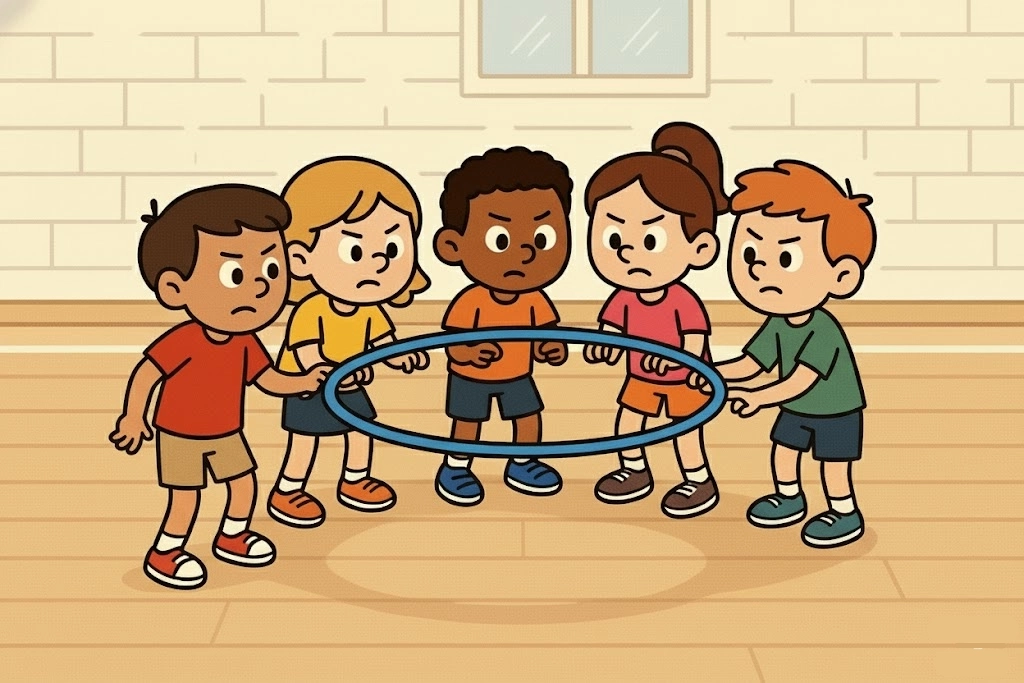
Indoor spaces don’t limit creativity—they simply require adapted activities. These fun indoor games work well in classrooms, gyms, or even living rooms on rainy days.
Classic Fun Team-Building Activities for All Ages
The Human Knot Activity
This timeless game works with 8-12 participants standing in a tight circle. Everyone reaches across to grab two different people’s hands, creating a tangled “knot.” The group must work together to untangle themselves without letting go.
Why it works: Kids need to communicate constantly, problem-solve collaboratively, and show patience. The activity typically takes 10-15 minutes, making it perfect for students work sessions with a time limit.
Protect the Castle
Divide kids into two teams. One team builds a “castle” using soft materials (pillows, foam blocks), while the other team must knock it down using soft balls—but only from behind a designated line. Teams switch roles after each round.
This activity is great for older kids who can handle more complex rule sets and strategic thinking. It combines physical activity with planning and teamwork.
Simple Team-Building Activities for Younger Kids
Younger kids benefit from activities with straightforward rules and immediate feedback. These games help them learn fundamental cooperation concepts.
Pass the Ball Circle
Kids sit in a circle and pass a soft ball using specific methods you call out: “over the head,” “between the legs,” or “to the left.” Gradually increase speed or add multiple balls to create an engaging challenge.
For variation, give kids a scenario: “We’re rescuing toys from a flood—each pass saves one toy!” This narrative element helps younger children stay engaged longer.
Collaborative Coloring
Give each group a large poster board and crayons, but assign each child responsibility for one color only. To complete the picture, they must communicate about who colors which sections. This activity helps kids to learn sharing, planning, and respecting others’ contributions.
Games Using a Stretch Band or Hula Hoop
Stretch Band Shapes
Using a large elastic stretch band (available at most educational supply stores), ask the group of kids to create specific shapes: square, triangle, circle, star. Kids stand around the circle of the band, each holding a section, and must coordinate their movements.
Progress to more complex challenges: “Make a square, then transform it into a triangle without anyone letting go.” This variation develops spatial reasoning alongside communication skills.
Hoop Pass Challenge
Kids stand in a line holding hands. Place a hula hoop over the first child’s arm. The team must pass the hoop down the line without breaking hand contact. To play this game with added challenge, use a time limit or have teams of two compete against other pairs.
Creative Problem-Solving Games and Activities
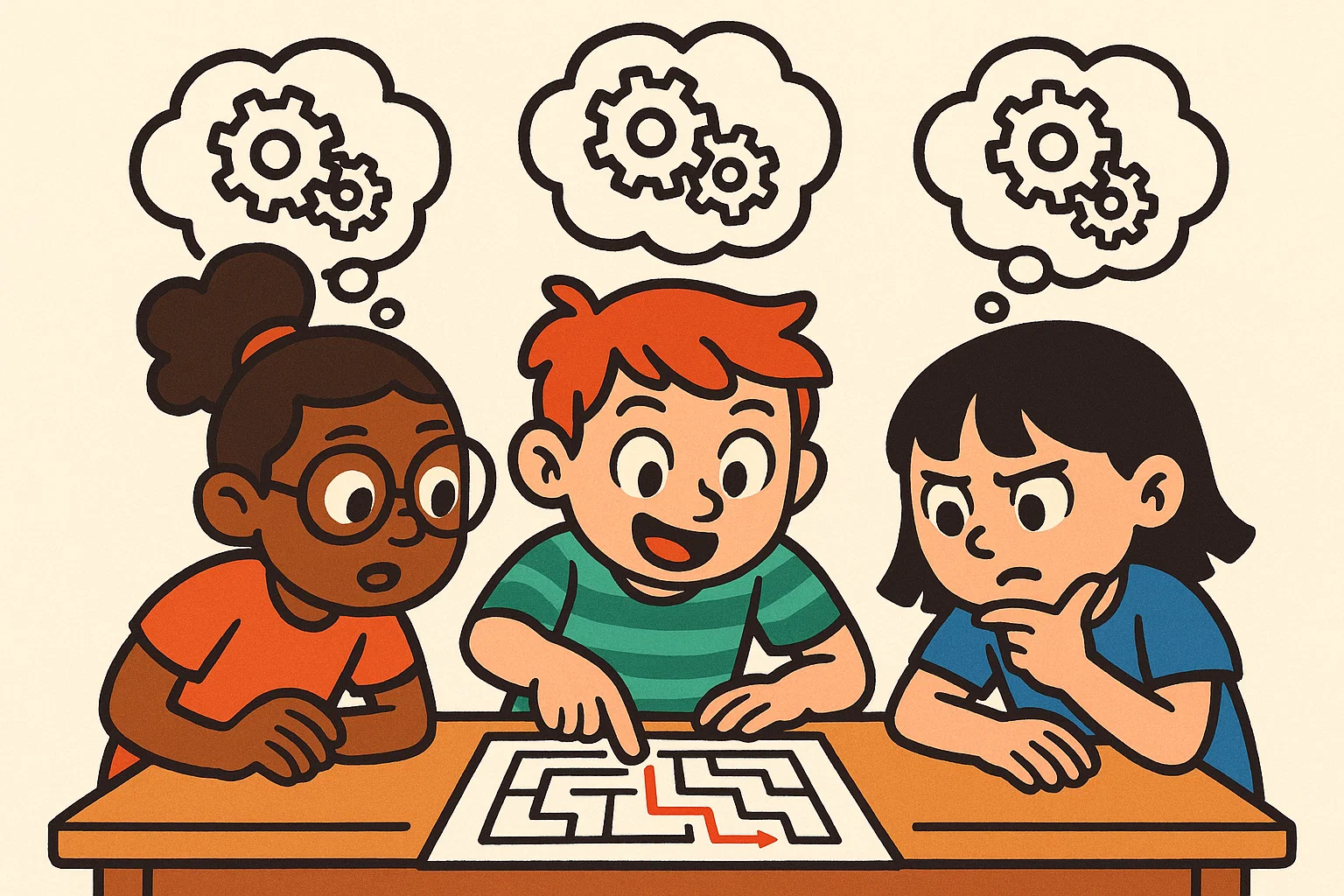
Activities that develop critical thinking skills give kids tools they’ll use throughout their lives. These challenges require teams to analyze, strategize, and execute solutions together.
Logic Challenges for Teamwork
The River Crossing Puzzle
Use tape to mark two “riverbanks” about 10 feet apart. Give the team a limited number of “stones” (paper plates or foam squares)—fewer than the number of team members. Everyone must cross without touching the “water,” and stones disappear if no one stands on them.
This activity presents a genuine puzzle. Kids need to develop strategies like:
- Having some team members move stones forward while others wait
- Creating relay systems where stones get passed back
- Timing movements so stones stay occupied
One middle school coach shared: “The first attempt usually fails, but watching students work through solutions together—sometimes taking 20 minutes to succeed—teaches persistence better than any lecture could.”
Games with Simple Materials
Cup Stacking with String
This fun team building game requires only plastic cups and a simple contraption: a rubber band with strings tied around it. Each team member holds one string and must work together using only the rubber band mechanism to stack cups into a pyramid.
The constraint—no one can touch the cups directly—forces kids to learn precise communication. Phrases like “pull left,” “hold steady,” or “lift slowly” become essential. Teams typically need 5-10 attempts before succeeding, making the eventual success especially rewarding.
Marshmallow Tower Challenge
Give each group 20 sticks of dry spaghetti, one meter of tape, one meter of string, and one marshmallow. Teams have 18 minutes to build the tallest freestanding structure with the marshmallow on top.
| Material | Quantity | Purpose |
| Dry spaghetti | 20 sticks | Structure support |
| Tape | 1 meter | Joining pieces |
| String | 1 meter | Additional support |
| Marshmallow | 1 | Must be on top |
| Time allowed | 18 minutes | Creates urgency |
This activity encourages rapid prototyping, risk-taking, and learning from structural failures. Engineering concepts emerge naturally as kids discover that wide bases create stability.
The No-Hands Cup Stacking Challenge
Similar to the string-controlled version, but with a twist: team members can only use their index fingers. Place cups upside down. The team must flip them and stack them into a pyramid using only their fingertips, working in unison.
This variation works particularly well for smaller teams of two to four children. It develops fine motor control while requiring constant communication about timing and pressure.
Outdoor Team-Building Activities
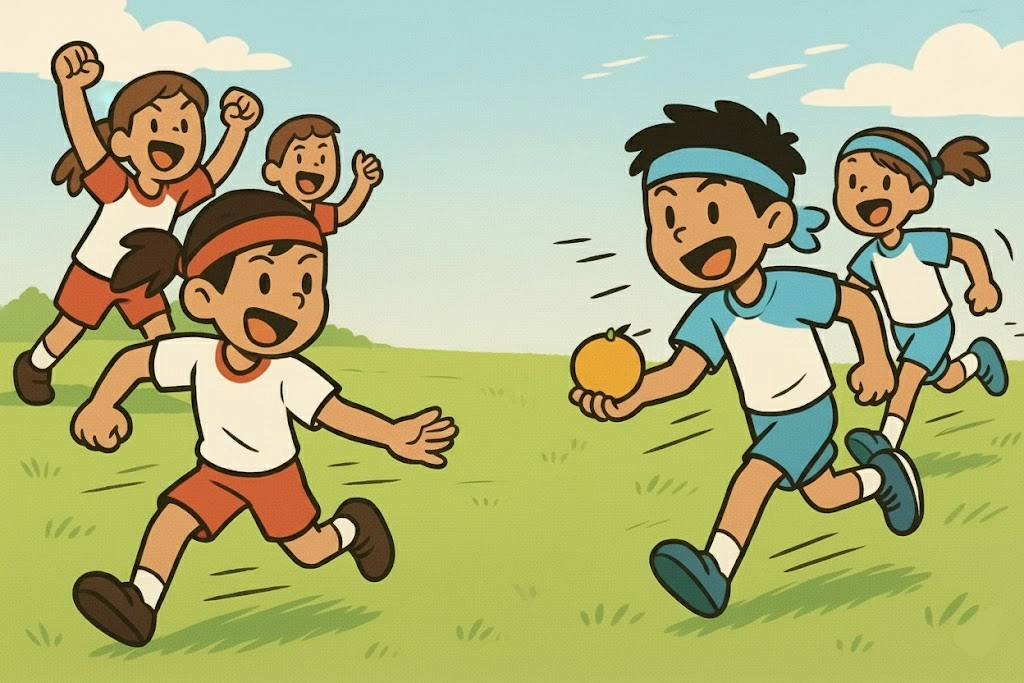
Open spaces allow for movement-based games that burn energy while building teamwork skills. These outdoor activities combine physical exercise with collaborative challenges.
Playground Games to Build Teamwork
Capture the Flag Variations
Traditional capture the flag naturally involves strategy and teamwork, but adding specific rules enhances collaboration:
- Buddy System: Kids must hold hands with a partner throughout the game
- Role Rotation: Every 3 minutes, defenders become attackers and vice versa
- Silent Strategy: Teams plan for 5 minutes but can’t speak during gameplay
These modifications ensure every player contributes strategically rather than relying on the fastest runners alone.
Cooperative Obstacle Course
Set up stations using playground equipment, jump rope sections, hula hoop stations, and balance beams. Here’s the twist: the entire team must complete each obstacle together.
For example:
- At the jump rope station, kids must perform group jump rope with everyone inside
- At the hula hoop section, the whole team must fit inside three hoops for 10 seconds
- At balance beams, kids form a chain and cross together
This is a great way to build teamwork because speed only matters if everyone succeeds together.
Movement and Relay Race Games
Mirror Movement Relay
Pair kids into teams of two. One child performs movements (jumping jacks, spinning, balancing on one foot) while their partner mirrors them exactly. After 30 seconds, they switch roles. Teams earn points for synchronization.
This activity helps kids to play collaboratively while developing body awareness and observation skills. It’s particularly effective for kinesthetic learners who process information through movement.
Dragon Tail Relay
Kids form a “dragon” by holding the shoulders of the person in front of them. The last person tucks a “tail” (bandana or cloth) into their waistband. Other dragon teams try to steal tails while protecting their own. When a team loses its tail, they must perform a collaborative task (sing a song together, do synchronized exercises) to rejoin the game.
Specific Team Building Games
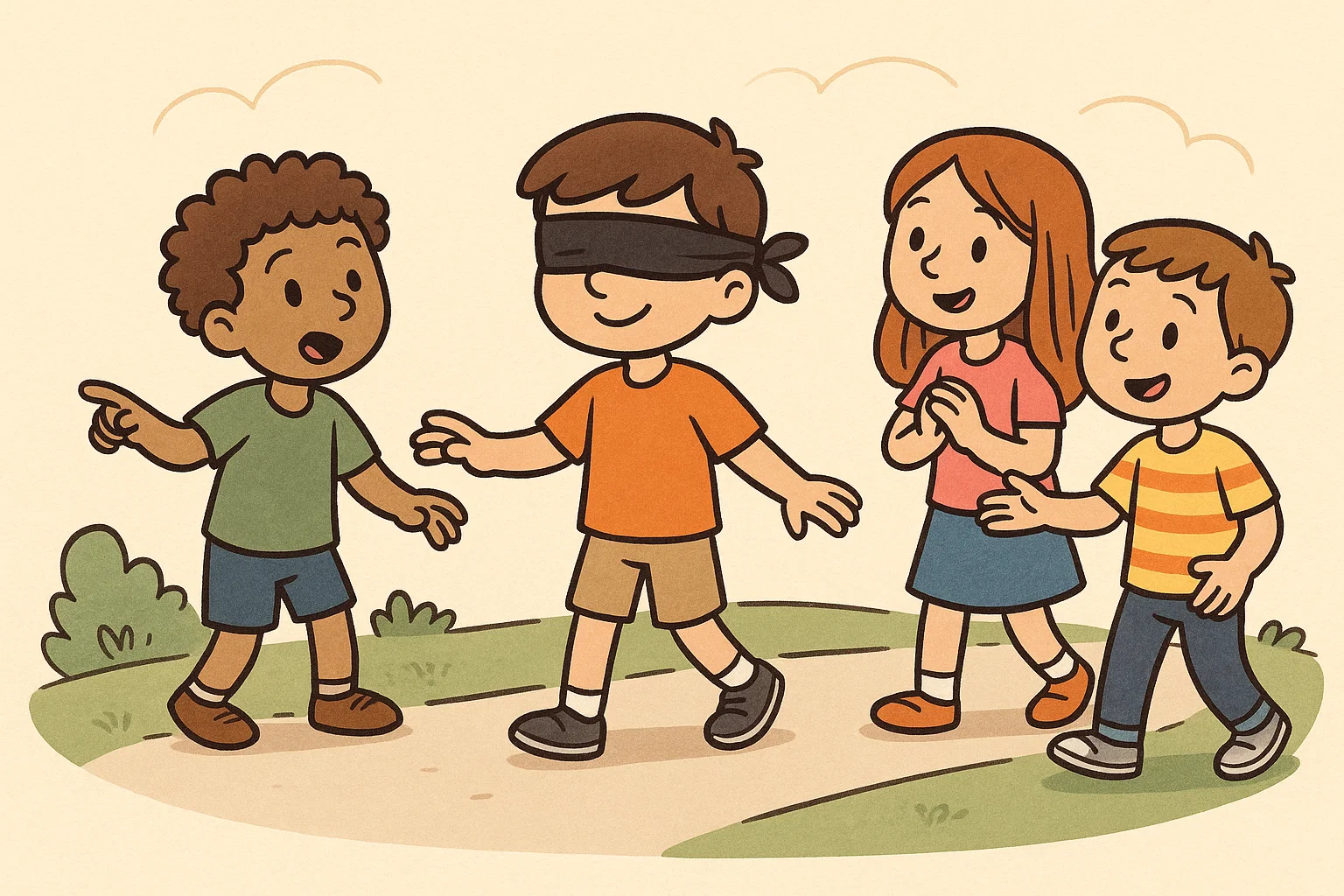
Some activities have become staples of team-building because they consistently deliver powerful learning experiences. These games deserve detailed exploration.
The Group Jump Rope Activity
Group jump rope requires precise timing and rhythm—skills that translate to many collaborative situations. Start simple and progress to complex variations.
Basic Group Jumping
Two kids swing the rope while others jump together inside. Begin with pairs jumping simultaneously, then gradually increase to 3-4 jumpers. This activity teaches kids to synchronize movements with others and maintain awareness of their position relative to teammates.
Progressive Entry
Start with one child jumping. On a signal, a second child enters without stopping the rope. Continue adding jumpers one at a time. This variation develops timing skills and confidence since kids need to judge the optimal moment to join.
Jump Rope Challenges with Tasks
While jumping, the group must complete challenges:
- Counting backward from 20
- Reciting the alphabet
- Solving simple math problems together
These additions make kids get better at maintaining coordination while handling cognitive tasks—a real-world skill combination.
A PE teacher from Colorado reports: “Group jump rope sessions noticeably improved my students’ ability to synchronize during team sports. The skill transfer was remarkable.”
The Fingertip Hula Hoop Challenge
This activity has become popular because it looks simple but requires genuine teamwork. Kids stand in a circle, each extending their index fingers at shoulder height. A hula hoop rests on everyone’s fingertips. The objective: lower the hoop to the ground without anyone losing contact.
Why It’s Deceptively Difficult
Paradoxically, the hoop often rises initially because people unconsciously push upward to maintain contact. Success requires:
- Someone to verbally count or provide rhythm
- Everyone to communicate if they’re losing contact
- Constant small adjustments from all participants
- Patience when the hoop rises instead of descending
Most groups need 3-5 attempts before they successfully lower the hoop without letting go. The experience teaches kids that complex coordination requires clear leadership, open communication, and collective commitment.
Variations for Different Ages
- For younger kids: Use a larger, lighter hoop and require only that it descends without worrying about perfect finger contact
- For older kids: Add obstacles they must lower the hoop around, or require silent completion (no verbal communication)
Blindfold Games for Trust
Activities involving a blindfold build trust by requiring kids to rely completely on teammates. These activities must be introduced carefully, ensuring children feel safe and understand that trust is being practiced.
Trust Walk
Pairs or groups form, with one child blindfolded. Partners guide them through a course using only verbal directions. Switch roles so everyone experiences both guiding and trusting.
Safety considerations:
- Clear the space of hazards
- Establish boundaries kids must stay within
- Give kids the option to peek if they feel genuinely uncomfortable
- Have spotters for younger children
The guided child learns to trust their partner’s instructions, while the guide develops clear communication skills and responsibility for another’s safety.
Blindfolded Shape Creation
Small teams receive a rope and must work together to form specific shapes (triangle, square, star) while blindfolded. One team member can see but cannot touch the rope—they must guide only with words.
This challenge combines the trust element with spatial reasoning. Kids learn to give precise directions (“Move three steps to your left,” “Hold your position”) and to follow instructions even when they can’t see the outcome.
The Human Knot Activity
Mentioned earlier, this classic deserves deeper examination because it encapsulates many team-building principles in one activity.
Setup and Rules
Groups of 6-10 kids stand in a tight circle, shoulder to shoulder. Each person reaches across the circle with their right hand to grasp someone else’s right hand (not the person directly next to them). Then repeat with left hands, grasping different people. The result is a tangled “knot.”
The challenge: untangle into a circle (or possibly two interlinked circles) without letting go of hands.
What Kids Learn
This activity demands:
- Clear communication: “Can you duck under our arms?” “Try stepping over this connection.”
- Spatial reasoning: Understanding how movements affect the overall configuration
- Patience: Solutions often require 10-20 minutes of trial and error
- Collective problem-solving: No single person can solve it; everyone must contribute
Common Challenges and Solutions
Teams frequently get stuck making the same unsuccessful attempts repeatedly. Encourage step-by-step thinking: “What if we focus on untangling just one person first?” This approach helps kids learn to break complex problems into manageable pieces.
Sometimes the knot is mathematically impossible to untangle into a single circle. In these cases, the group must recognize when they’ve achieved the best possible outcome (two separate circles)—a valuable lesson in realistic goal-setting.
Implementing Team-Building Activities Effectively
Understanding great activities matters, but implementation determines success. Consider these practical strategies from educators and youth development professionals.
Age-Appropriate Selection
Match activities to developmental stages:
| Age Range | Appropriate Focus | Example Activities |
| 4-6 years | Simple rules, immediate feedback | Pass the ball, collaborative coloring |
| 7-9 years | Moderate complexity, short timeframes | Cup stacking, basic obstacle courses |
| 10-12 years | Strategic thinking, longer challenges | Marshmallow tower, complex relay races |
| 13+ years | Abstract reasoning, leadership roles | Multi-stage problem-solving, competitive strategy games |
Creating Safe Emotional Environments
Kids need to feel safe making mistakes during team activities. Establish ground rules:
- No laughing at failed attempts
- Everyone participates; no one sits out due to skill level
- Focus on group success, not individual performance
- Celebrate creative solutions even if they don’t work
One youth program director emphasizes: “The rule in our program is simple—you can say ‘this isn’t working,’ but you can’t say ‘you’re doing it wrong.’ That small language shift changes everything.”
Debriefing After Activities
Five minutes of reflection after each activity deepens learning. Ask questions like:
- What strategy worked best for your team?
- What did you do when your first idea didn’t work?
- How did you make sure everyone’s voice was heard?
- What would you do differently next time?
These discussions help kids get conscious about the skills they’ve practiced, making transfer to other situations more likely.
Adapting for Different Group Dynamics
Observe how your specific group of kids interacts:
- Highly competitive groups: Emphasize collaborative challenges where teams work against the clock rather than each other
- Shy or new groups: Start with lower-risk activities (no blindfolds, no physical contact) before progressing
- High-energy groups: Begin with movement activities to burn energy, then introduce activities requiring focus
- Mixed-age groups: Assign roles that leverage different developmental strengths (younger kids spot hazards, older kids plan strategy)
Long-Term Benefits of Consistent Team-Building
When team-building activities become regular parts of children’s experiences, effects compound over time. A longitudinal study tracking elementary students over four years found that those participating in weekly structured group activities showed significant advantages:
- 25% higher scores on collaborative problem-solving assessments
- Greater likelihood of taking initiative in group academic projects
- Improved conflict resolution skills in peer relationships
- Increased willingness to seek help and offer assistance
Perhaps most significantly, these kids demonstrated better emotional regulation during stressful group situations. The repeated practice of working through challenges together builds resilience that extends far beyond individual games and activities.
